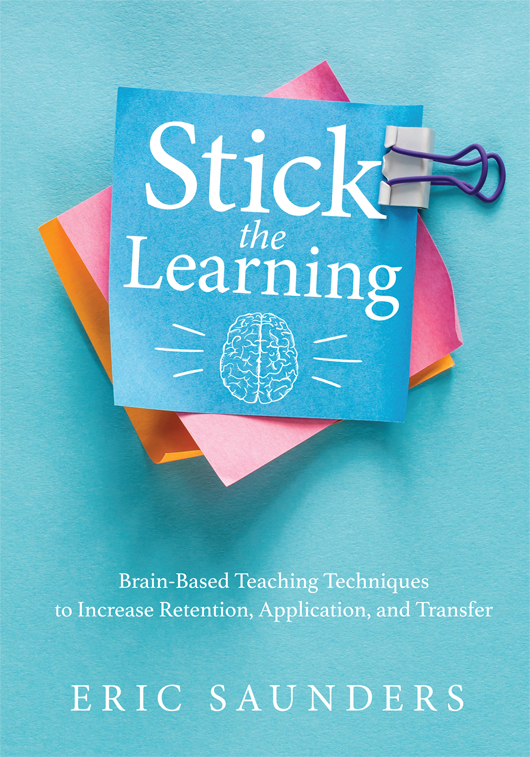Free Reproducibles
Stick the Learning
Brain-Based Teaching Techniques to Increase Retention, Application, and Transfer
Research shows that desirable difficulties as achieved with spaced repetition, interleaving, and retrieval (SIR) have positive long-term impacts on student learning, because the learning sticks. This book guides you through these three techniques for a more brain-compatible classroom geared toward student success.
Benefits
- Understand the SIR techniques that support a brain-compatible classroom
- Use activities to better implement SIR in the classroom
- Understand the importance of utilizing repetition and interleaving alongside retrieval
- Increase student achievement
- Reflect on their own growth and success in implementing SIR techniques
TABLE OF CONTENTS
Introduction: Why Teach Social-Emotional Learning to All?
Chapter 1: What Is Social-Emotional Learning?
Chapter 2: Establishing Culture, Climate, and the Learning Environment for SEL in Elementary Schools
Chapter 3: Building a Schoolwide Foundation for SEL in Elementary Schools
Chapter 4: Effective SEL Teaching Practices and Strategies in Elementary Schools
Chapter 5: Effective SEL Lesson Planning
Chapter 6: Monitoring Student Learning of SEL
Appendix
STUDY GUIDE
REPRODUCIBLES
Chapter 2
- Applying Spaced Repetition to a Learning Target
- Applying Spaced Repetition to a Lesson
- Applying Spaced Repetition to a Unit
- Applying Spaced Repetition to Multiple Units
- Spaced Repetition Overview
Chapter 3
Chapter 4
SUGGESTED RESOURCES
Books
- Bailey, K., & Jakicic, C. (2012). Common formative assessment: A toolkit for Professional Learning Communities at Work®. Bloomington, IN: Solution Tree Press.
- DuFour, R., DuFour, R., Eaker, R., Many, T. W., & Mattos, M. (2016). Learning by doing: A handbook for Professional Learning Communities at Work (3rd ed.). Bloomington, IN: Solution Tree Press.
- Glass, K. T. (2020). Reading and writing instruction for fourth- and fifth-grade classrooms in a PLC at Work. Bloomington, IN: Solution Tree Press.
- Kise, J. A. G. (2021). Doable differentiation: Twelve strategies to meet the needs of all learners. Bloomington, IN: Solution Tree Press.
- Kramer, S. V., & Schuhl, S. (2017). School improvement for all: A how-to guide for doing the right work. Bloomington, IN: Solution Tree Press.
- Marzano, R. J. (2010). Formative assessment and standards-based grading. Bloomington, IN: Marzano Resources.
- Sousa, D. A. (2012). Brainwork: The neuroscience behind how we lead others. Bloomington, IN: Solution Tree Press.
- Wiliam, D. (2018). Embedded formative assessment (2nd ed.). Bloomington, IN: Solution Tree Press.
Websites
Chapter 2
- Duolingo
- Anki
- Mnemosyne Project
- Brainscape
- “Regional glucose metabolic changes after learning a complex visuospatial/motor task: a positron emission tomographic study”
- Bloom’s Taxonomy
Chapter 3
Chapter 4

